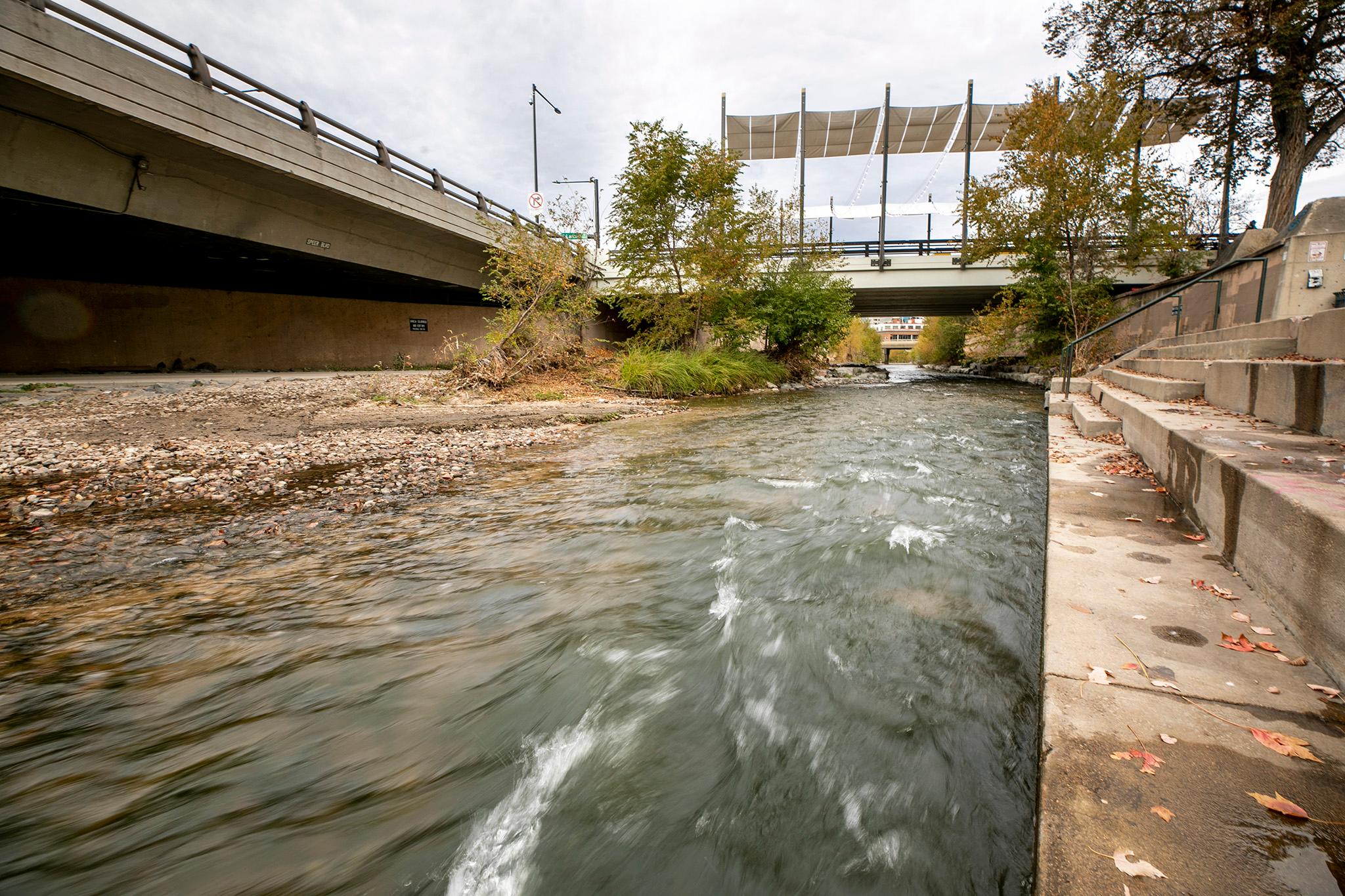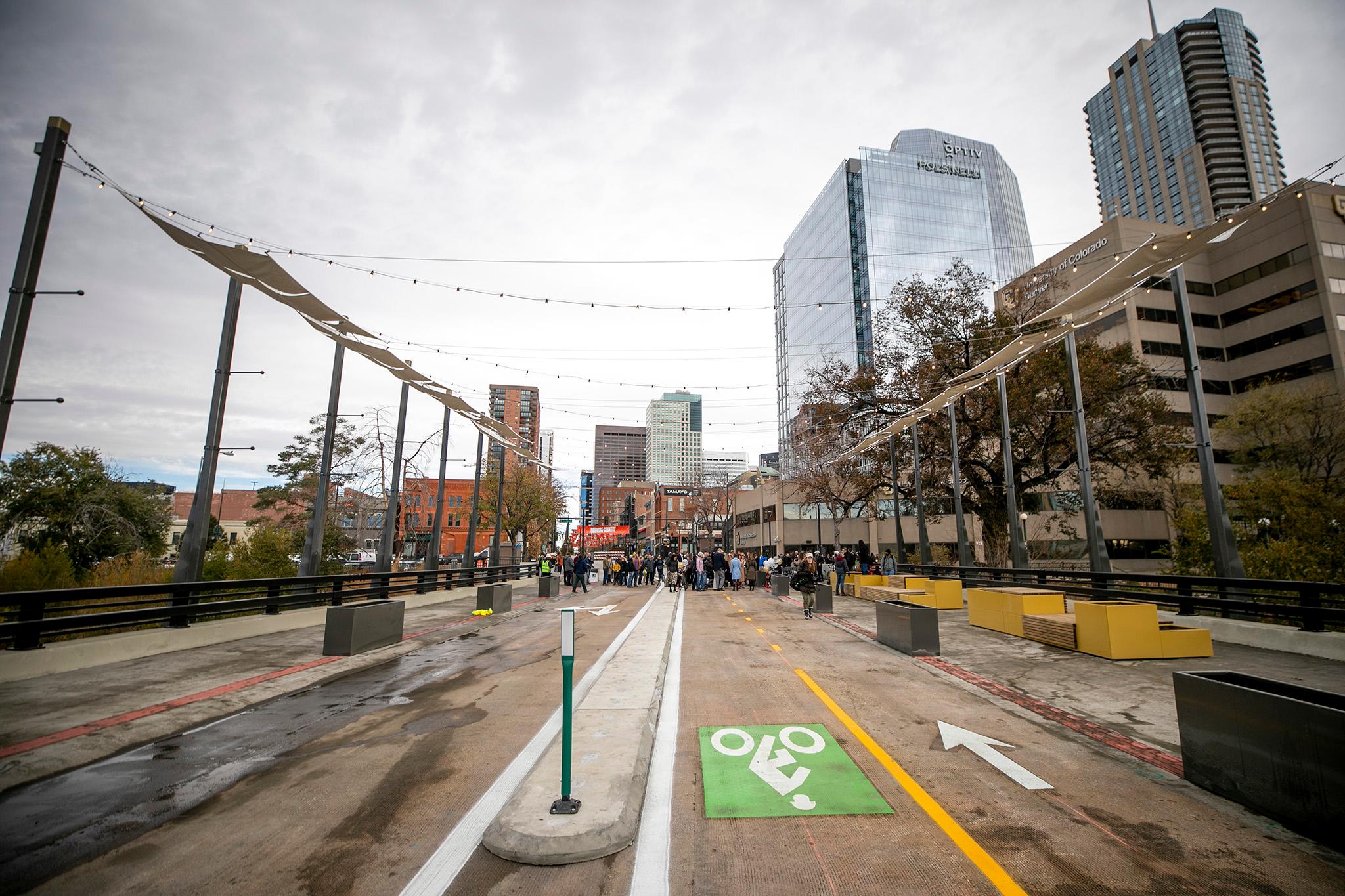Just over a year ago, the Larimer Street Bridge transported three lanes of traffic, with narrow sidewalks on either side, between the city's Auraria Campus and downtown. The bridge was closed for an overhaul in December 2022 and reopened to the public Wednesday with a new focus on pedestrians and cyclists.
The nearly $6.4 million project was funded through Elevate Denver, a $937 million voter-approved bond earmarked for more than 460 improvement projects to be completed across the city by 2027.
The revamped bridge decreases car traffic from three lanes to just one. Pedestrians and cyclists still need to cross eight lanes of busy traffic on Speer Blvd. to get from the Auraria Campus to downtown, but the new Larimer Street bridge now has expanded pedestrian sidewalks, better lighting and a two-way protected bike lane.
The bridge also includes new planters that filter rainwater down to Cherry Creek below, which helps reduce heat in the area.
"This connector finally helps bridge the thriving vibrant community of the Auraria Campus with the thriving vibrant community of downtown," said Mayor Mike Johnston at the ribbon-cutting ceremony. "This is not only a great opportunity for Auraria and for downtown, I think it's a great model for what we hope to do in places all around the city."

Councilmember Chris Hinds, who represents the downtown side of the bridge in District 10, said the redesign is a model for the types of projects Denver should focus on in the future.
Hinds recently sponsored a rezoning project along Colfax Ave., which promotes pedestrian-focused businesses over drive-through businesses and car infrastructure.
"Many of our roadways once prioritized the car," he said. "Well, Denver's values are changing, and this stretch of Larimer is an example of that change. What was all for cars now prioritizes people... This is what we need more of in our city. A broad and inviting pedestrian experience and cyclist experience, so we all feel safe getting from A to B."
Hinds, who uses a wheelchair, emphasized improving the accessibility of city infrastructure.
"If I can get down the sidewalk, and someone with a vision impairment can get on the sidewalk, everyone can."

Officials at the ribbon-cutting event also talked about the economic benefits of the project as a way to help businesses by better connecting college students to downtown, which has struggled since the pandemic.
That connection comes with a loaded history. Before the Auraria campus existed in its current form, the area was anchored by a predominantly Latino neighborhood bounded by Colfax and Speer in a largely segregated city. In the 1970s, "urban renewal projects" displaced residents from where the Auraria campus currently stands.
Now, the bridge connecting the neighborhood to downtown is seen as a way to promote economic opportunity.
"This project is also such a premier example of the importance of connecting our neighborhoods. Our city center and our economy benefit when we are all better connected, when we're connecting with each other across these kinds of boundaries," said Kourtney Garrett, CEO of Downtown Denver Partnership.












